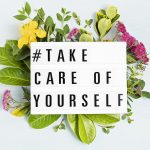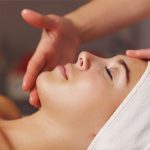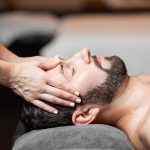Self-care is all about the everyday habits that help you take care of and nurture your health and well-being. It means listening to your body, intentionally tuning in to the thoughts going on in your mind, and challenging your behaviors.
You may love the idea of self-care, and you may be on board with the benefits, but have you recognized the need for self-care? Actually adopting a self-care practice that can improve your life in more ways than you think.
Understand what self-care is and what is not
“The way I define self-care is the intentional, proactive pursuit of integrated wellness that balances mind, body, and spirit personally and professionally,” says Paula Gill Lopez, Ph.D., an associate professor and the chair of the department of psychological and educational consultation at Fairfield University in Fairfield, Connecticut.
Self-care is about more than taking care of your physical health. Things are moving so fast around us that we need space to self-care and slow down to rest from all the busyness in our lives.
Ultimately, your self-care routine should make you a better version of yourself. You should get some enjoyment out of the activity. Rule of thumb, if the activities that you choose are adding to your well-being and are not detrimental to the other areas of your life, then there is a benefit. You are better suited to take care of others, foster strong relationships, be resilient, and balance personal and professional responsibilities.
To help you get some direction, I have rounded up some powerful, important tips on self-care. Please take these tips as guideposts rather than commands. Find a way to make them fit that feels comfortable.
- Do not do things you hate: This seems obvious but sometimes it is not. When exercising you need to do an activity that you enjoy or it is not self-care. Each self-care habit you engage in must be customized especially for you, and the first step is to stop routines and actives that make you feel like you’re dying inside.
- Find out what you love: This also seems obvious, however, when you are not doing what you love, you lose determination. When you lose determination, you are back to square one. Don’t settle for anything less than raw, pulsating passion.
- Recover from “expert addiction”: There is a curious and toxic trend in our society to trust outside sources of advice and approval more than we trust our own selves. If you want to build lifetime habits, the ONLY approval you need is your own. Do not allow your path to be dictated by others. Find your own way. You are your own expert.
- Develop a daily self-care routine: Speak kindly to yourself EVERY DAY! Move your body, connect with your spirit, eat mindfully. It is much easier to do something EVERY. SINGLE. DAY. When you do something every single day, you develop a habit more easily.
- Play with your routine: Commit to structure of the routine while allowing yourself to play within it. Impose a rigid structure with rigid activities, soon you will feel suffocated. To feel free as well as fulfilled, you must allow for structure as well as play in your habits. Allow for your routine to have a basic structure and allow yourself to play with the activities within that structure.
- Relax: Remember the feeling of peace. The purpose of caring for yourself is to do it in a way that is graceful, flowing, and kind to yourself. If you begin to get stressed, find a way to relax. A massage or facial can do wonders 😉
- Know your worth: Self-care is important to maintain a healthy relationship with yourself as it produces positive feelings and boosts your confidence and self-esteem.
- A healthy work-life balance: Contrary to common belief, workaholism is not a virtue. Being overworked with excessive stress and exhaustion can make you less productive, disorganized, and emotionally depleted. I can also lead to all sorts of healthy problems. Professional self-care habits are just as important and personal self-care habits. Setting professional boundaries, avoiding overextending, etc. ensures that you stay sharp, motivated and healthy.
- Stress Management: A little does of stress is a healthy way to give us a nudge on deadlines or to finish overdue tasks, constant stress and anxiety can have an adverse effect on your mental and physical health. Eating healthy, connecting with a loved one or practicing meditation cuts down the toxic effects of stress by improving your mood and boosting your energy and confidence levels.
Now, after we’ve decided on new self-care habits, how do we get them to stick?
- Start small – if you’re increasing water intake, start by one extra glass. It’s baby steps that will lead to big accomplishments.
- Know your excuses – What gets in the way of this habit? Is it because you’re tired? Or you run out of time? Whatever habit you’re failing to form, consider what is preventing your success. Once you nail down your usual excuses, you can address them!
- Set yourself up for success – It’s time to nip the excuses in the bud and get to work. If you forget your gym clothes, have an extra pair in your car. If you have a tendency to forget appointments for yourself, schedule them and don’t back out!
- You will fail, but try again – Whether you cheat on a diet, skip a work out, or forgot to journal this morning – it’s ok! Just try again tomorrow.
- Keep track – What gets measured gets managed. Plus it’s a great way to set goals, smash those goals, and celebrate your successes!
Precision Wellness is here for you, no matter what part we take in your self-care journey. Remember, you’ve got this!




